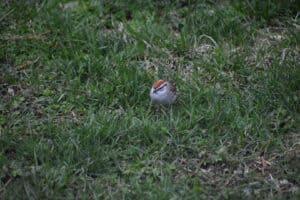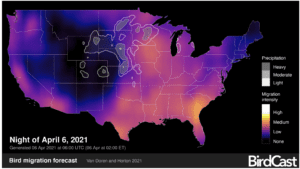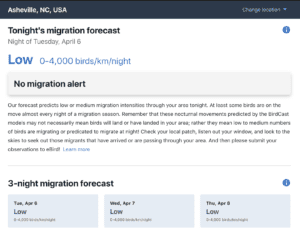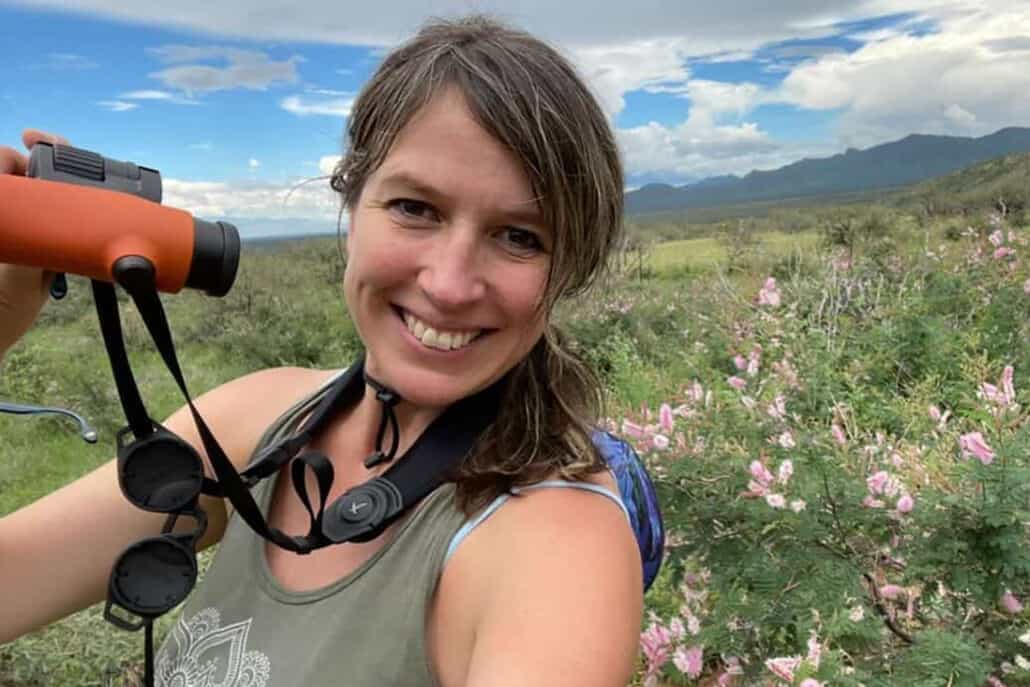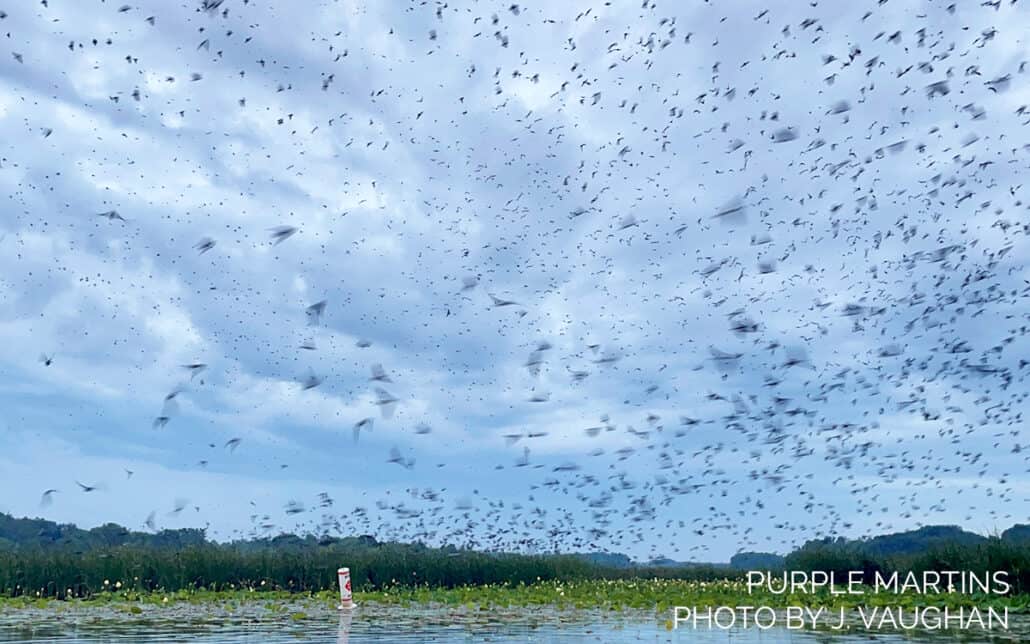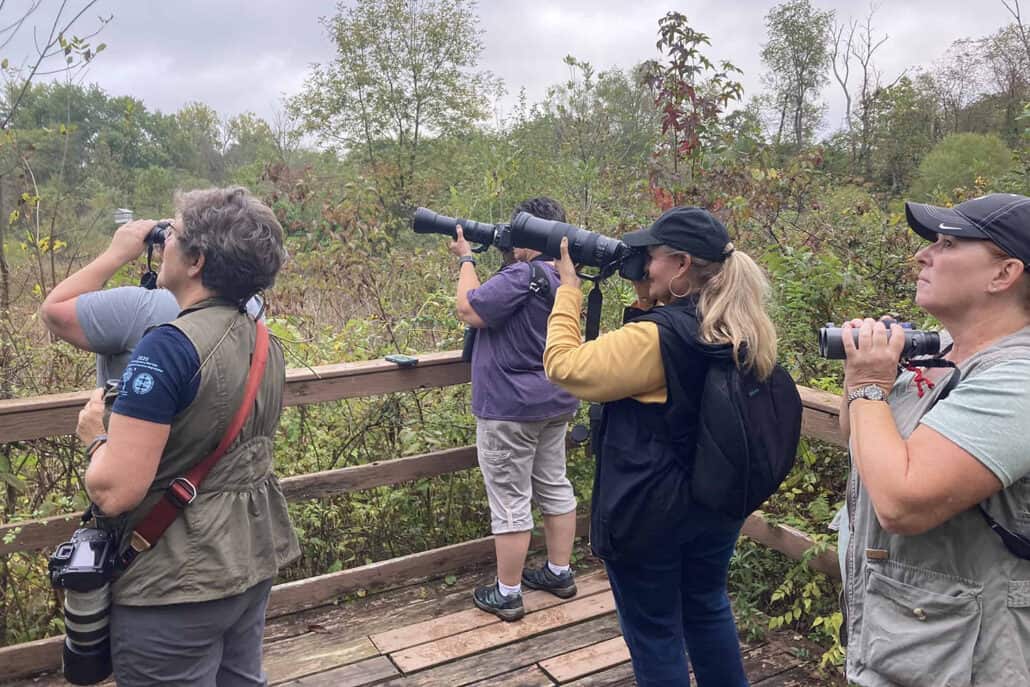Let’s be real: There’s no substitute for the thrill of being out in the field to witness neotropical migrants and the requisite sensory overload. Just recently I’ve enjoyed the early offerings my local Columbus, Ohio, ravine provides come late March: eastern phoebes, brown creepers, chipping sparrows, to name a few.
Now that I work full-time at Bird Watcher’s Digest—a career move that pays dividends several times over, truly—I actually can consider my birding as professional development! Because I worked 9-to-5 jobs that weren’t bird-centric, until now I’ve been a sort of “fits and starts”-style birder, fitting it in as I was able. Since I began this position in late 2019, I’ve gradually increased how frequently I bird, and it always picks up in spring because, well, that’s when the birding gets GOOD! And with the upcoming Birds, Blue Ridge, Beers, and Biltmore Reader Rendezvous I’ll help lead, it’s time to sharpen up!
Enter BirdCast. A virtual tool developed by Cornell Lab of Ornithology, it utilizes radar to predict and monitor bird migration in the US. The following information are primers of BirdCast’s three subsections. Note: For enlarged views, click on each image.
Bird Migration Forecast Maps
One tool I discovered about four years ago helped me feel especially connected to the daily avian ebb and flow of migration: Cornell Lab of Ornithology’s BirdCast Bird Migration Forecast maps. As its name suggests, BirdCast posts bird migration forecasts. Much like a traditional weather forecast map, BirdCast’s Migration Forecast map displays a US map with color-coding to indicate bird migration patterns. From none (black) to high (lightest yellow), it forecasts migration movement from the current day to three days out. I have appreciated using this tool as a means to anticipate when migration will be building steam in my area. I will also let you in on a secret: I’m not a morning person by nature, so I’ve used the Migration Forecast map to determine whether or not I really, really need to peel myself out of bed at 7 a.m. on a Saturday.
Live Bird Migration Maps

As of 2018, live migration maps show what is happening in real-time! The Live Bird Migration Map tool chronicles migration trends over a 24-hour period. Simply press the play button in the bottom left-hand corner of the screen to view activity. This interactive map also includes a helpful key. One tip to bear in mind: The orange arrows that appear onscreen as the map is played indicate the direction in which birds are flying. Another cool feature is a dropdown tool, located directly above the map image. It allows users to view migration historical radar movements every day dating back to March 20, 2018.
My tendency has been to view this map during spring, as my birding itch typically kicks into full gear during this time. One of my goals as I evolve as a birder is to become more familiar with hawk migration in autumn. It hadn’t dawned on me before but I could use BirdCast to monitor raptor migration patterns during autumn as well. Of course, BirdCast isn’t a substitute for birding itself, but that’s not the intent.
BirdCast Alerts
In a hurry, and just need a down-and-dirty glimpse of expected migratory activity? Want to impress your friends and influence birders with bold migratory predictions? The local bird migration alerts tool offers a three-night migration snapshot of migratory activity in US towns and cities. It simply uses low, medium, and high to categorize migration intensity for the upcoming three days. No maps, no fuss, just three simple words! This tool is in its beta phase, so there might be tweaks and updates coming.
I’m so grateful that Cornell Lab has invested the research and effort into creating so many vital citizen science tools over the years. This little gem might be my favorite.

